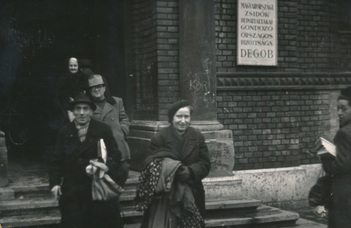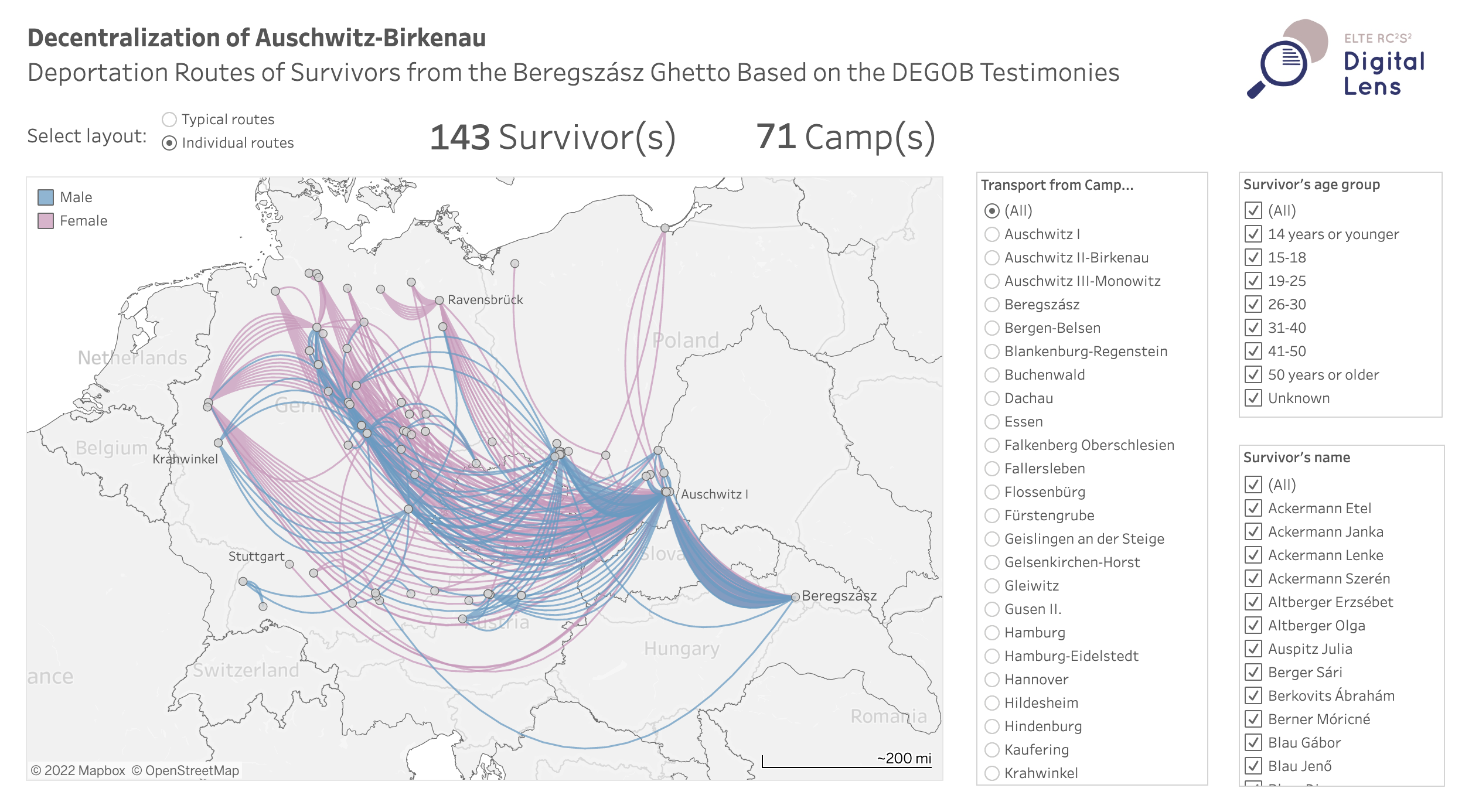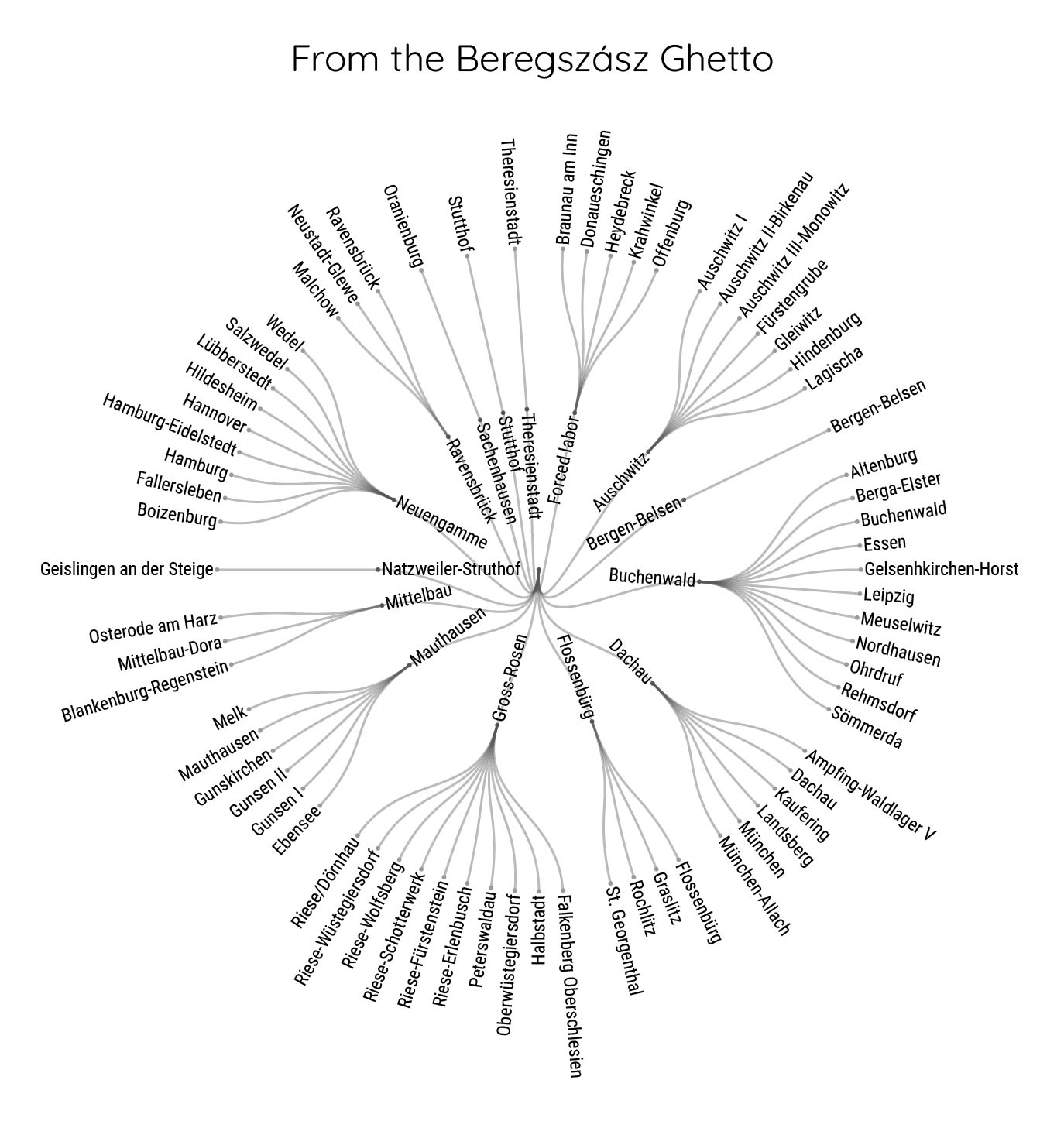Digital Lens Analyzes Holocaust Testimonies by Natural Language Processing

The testimonies of the Hungarian survivors were recorded by the National Committee for Deportees (DEGOB) between 1945 and 1946. The research group "Revisiting Early Testimonies of Hungarian Jewish Holocaust Survivors through a Digital Lens" (Digital Lens for short) is now analyzing these records with new, innovative methods. The research uses digital text analysis, such as natural language processing (NLP) to reveal the idiosyncrasies of the language used by the survivors, the topography of persecution and survival, and the experiences recounted from typically female and male perspectives.
 |
|
The map shows the route of the 143 survivors deported from the Beregszász ghetto. Each line represents the journey of a survivor, color-coded by gender. The survivors were held at 71 camps in total. The interactive visualization can be filtered by age group, and it also provides insight into the fate of individual survivors. |
What are the main characteristics of the language used in the testimonies of Jewish Holocaust survivors? Do we find significant differences between different survivor groups? How does the language used by the survivors relate to the colloquial language of the era, or to the style of contemporary print media? Among other things, the research seeks answers to these questions with AI-aided digital methods, said Ildikó Barna, PhD, associate professor of the Faculty of Social Sciences at ELTE, co-chair of ELTE Research Center for Computational Social Science.
Another avenue of research deals with the topography of persecution and survival. Where were the survivors deported from? Where were they marched to and detained during the Holocaust? What characterized the post-liberation period? By what route and how did they return to Hungary? Further, the research pays special attention to the linguistic differences between women's and men's experiences (gendered experience).
 |
|
The figure reveals the camp system related to the survivors of the Beregszász ghetto: it shows that the Beregszász survivors visited more than sixty different concentration and labor camps, grouped around 14 central camps. |
At the "Challenges In Presenting Holocaust Resources In The Digital Age" workshop, held in Jerusalem at the end of November, the research group presented the project's newly launched website, a platform where those interested in historiography and modern history can learn about the outcomes of the research with the help of captivating interactive data visualizations and maps. The website collates news about all related publications and presentations, and gives insight into the research methodology.
The focus of the international workshop organized by the EVZ Foundation, the European Holocaust Research Infrastructure and the Yad Vashem Institute was the digital processing of Holocaust sources, with the aim to bring together researchers and artists who use innovative methods to make the memories of the Holocaust more accessible. In their presentation at the meeting, Ildikó Barna, associate professor of ELTE Faculty of Social Sciences, Alexandra M. Szabó, PhD student of Brandeis University, and Eszter Katona, PhD candidate, teaching assistant of ELTE Faculty of Social Sciences, presented the routes taken by those deported from the Beregaszász ghetto. The findings may contribute to the reassessment of the Auschwitz-centric narrative widespread in Hungarian Holocaust-representations.
Using a digital map, the researchers demonstrated that geographic routes of deportations can also be used as an analytical tool in historiography. By displaying the data on a network graph, we also presented the connections between locations - said M. Alexandra Szabó, who welcomed the notion that the toolbox of future research can be further expanded and enriched by the use of innovative digital technologies.

